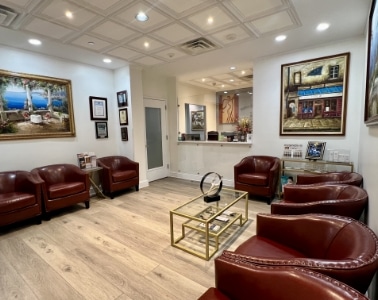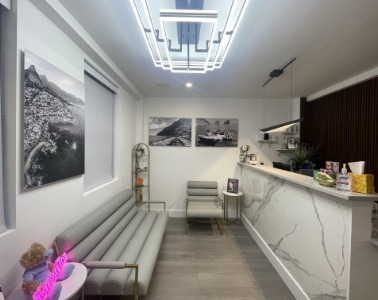
A thigh lift is performed to tighten the skin around the inner thigh to form a more aesthetically pleasing frame. Your doctor will strive to produce slimmer, more contoured thighs that are proportionate to the buttocks, stomach and legs. The outer thigh is generally not targeted in a thigh lift, as liposuction and a butt lift tend to produce better results in that area of the leg.
This procedure may be performed alone, or in combination with other cosmetic procedures, such as part of a body lift or with a buttock lift. When combined with other procedures, patients can achieve maximum results and enjoy a younger and more refreshed appearance overall. Your doctor will discuss your personal aesthetic goals with you in order to develop the best treatment plan for you.
Candidates for Thigh Lift
The thigh lift procedure is ideal for patients who are in good general health but have excess skin and tissue within the thigh area as a result of the natural aging process, pregnancy or significant weight loss. A thigh lift should not be considered an easy weight loss solution, and are most effective on patients who are close to their ideal weight but unhappy with the appearance of their thighs. It is important for patients to maintain realistic expectations in order to be satisfied with the results of their thigh lift procedure.
Thigh Lift Procedure
The thigh lift procedure is performed under general anesthesia and requires an incision in the groin area and sometimes extending downward around the back of the thigh, depending on the results desired by the patient. These incisions are placed so that they can be hidden by even swimsuits. An inner (medial) thigh lift may require an incision only in the groin area, and is ideal for patients with a moderate amount of skin and fat in the inner thigh area. An outer (lateral) thigh lift involves an incision stretching from the groin and can often lift the buttocks in addition to the thigh.
After the incision is made, the surgeon will tighten the tissues in the area to create a smoother and more toned contour. The incisions are closed with sutures and the patient will be asked to wear a compression garment in order to minimize swelling and promote proper healing.
Arm Lift (Brachioplasty)
An arm lift, also known as brachioplasty, is a surgical procedure performed to remove excess fat and skin from the upper arms for a more toned, slimmer appearance. Over time, the soft tissue in the upper arm becomes lax and may begin to droop and sag, resulting in arms that appear loose and hanging. Soft sagging tissue on the upper arms may also be the result of a very successful weight loss program.Often, even an otherwise productive exercise program cannot address the inelastic skin and fat deposits that may cause sagging upper arms. Many people are embarrassed by the appearance of sagging upper arms, and seek treatment to restore a slimmer, more youthful appearance.
The arm lift procedure is ideal for patients who have a significant amount of excess, hanging skin or fat in the upper arm area, maintain a stable weight and have realistic expectations for surgery. It is also important that patients are healthy overall, with no major medical conditions that may be affected by surgery.The arm lift procedure will reduce excess skin and fat deposits between the underarm and the elbow, reshape the skin and contours of the upper arm, and give the arms a more toned appearance.
Procedure
During the arm lift procedure, an incision is made along the inside of the upper arm, often spanning from the underarm to the elbow. Excess fat can be removed using liposuction, before trimming and tightening the excess skin and suturing it into place. For patients with only a small amount of excess skin, a minimal incision arm lift procedure may be performed, in which a few small incisions are made near the underarm area for a less invasive fat and tissue removal.
Once fat is removed and skin is tightened, the incision will be closed with sutures that will be absorbed by the body within a week or two. This procedure is performed under local anesthesia with sedation and usually takes one to three hours, depending on the extent of removal required. Patients will be able to return home the same day as surgery.


